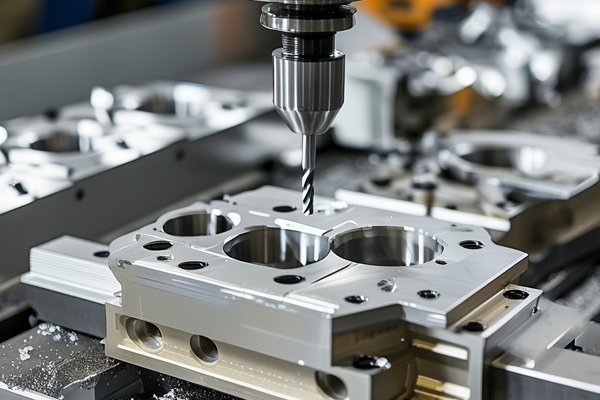Opening
Did you know that the machining errors in manufacturing can lead to over 30% of product waste, costing billions in losses annually? In an era where precision and efficiency are paramount, CNC (Computer Numerical Control) machining stands out as a modern solution to optimize production processes. But how do CNC machining manufacturers ensure an error-free environment that not only upholds quality standards but also keeps waste to a minimum? This blog will delve deep into the strategies, technologies, and methodologies that CNC manufacturers employ to ensure accuracy and eliminate errors in the machining process.
—
Understanding CNC Machining and Its Importance
CNC machining refers to the automated control of machining tools (like drills, lathes, and mills) via a computer program. This technology allows manufacturers to produce intricate components with high precision, thus fulfilling the demands of various industries including aerospace, automotive, and medical.
The importance of accuracy in CNC machining cannot be overstated. A slight deviation in measurements can result in faulty parts with substantial implications. As customer expectations rise and global competition intensifies, ensuring precision in CNC machining is vital for maintaining reputation, achieving operational excellence, and maximizing profitability.
—
Key Factors Influencing Accuracy in CNC Machining
Calibration is the process of setting and correcting the accuracy of a CNC machine. This process should be implemented regularly, as machines can drift over time due to factors such as mechanical wear, temperature changes, or operator error.
Solution: Implement a rigorous calibration schedule that checks all key parameters. Utilize advanced calibration tools that can measure deviations down to microns.
The selection of the right tools for machining is crucial for precision. Poorly manufactured or worn-out tools can compromise the machining accuracy.
Solution: Utilize high-quality cutting tools made of premium materials, and ensure they are routinely inspected and maintained. Implement a tool management system to track tool usage and lifecycle.
Software plays a fundamental role in CNC machining accuracy. Poorly programmed machines can lead to errors in cutting paths.
Solution: Invest in advanced CAD/CAM software that generates accurate machining codes. Incorporate simulation software to visualize tool paths before actual machining begins, allowing for error detection prior to implementation.
Different materials respond uniquely to machining processes. Harder materials may cause tool wear, while softer materials may lead to deformation.
Solution: Conduct thorough material assessments. Choose materials best suited for the specific machining operations and ensure compatibility with tools being used.
The way a workpiece is set up on the CNC machine can significantly influence accuracy. Misalignment can introduce errors.
Solution: Employ tools such as vises and fixtures for secure holding of workpieces. Use coordinate measuring machines for precise setup.
Temperature fluctuations can lead to expansion or contraction of both the tool and workpiece, resulting in inaccuracies.
Solution: Implementing environmental controls in your manufacturing facility, such as air conditioning or specialized enclosures, can help maintain a stable temperature. Use temperature-controlled tools and workpieces when necessary.

An operator’s experience and skill level are critical to reducing errors during machining. Even advanced technology can falter in the hands of an inexperienced operator.
Solution: Invest in comprehensive training programs for CNC operators. Conduct regular refreshers and updates on new technological advancements.
Establishing a routine inspection process can help detect inconsistencies and errors early on.
Solution: Conduct regular inspections using precision measurement tools (like micrometers and calipers) after each machining cycle and before the final product reaches customers.
A robust feedback loop allows operators and managers to learn from mistakes and continually improve processes.
Solution: Implement a digital reporting system that tracks errors, machine downtime, and operator feedback. Analyzing this data can help identify recurrent issues and areas for improvement.
—
The Role of Automation and IoT in Reducing Errors
In recent years, the rise of automation and the Internet of Things (IoT) has revolutionized the CNC machining industry. IoT-enabled devices can provide real-time data on machining processes, alert operators to potential issues, and even adjust parameters automatically to maintain accuracy.
—
Case Studies: Successes in Error-Free CNC Machining
Example 1: Aerospace Manufacturer
A major aerospace company implemented a combination of advanced CAD/CAM software and IoT sensors on their CNC machines. By leveraging real-time data analytics, they reduced their error rates by 25%, significantly improving their production efficiency and reputation for quality.
Example 2: Medical Device Manufacturer
A medical device manufacturer focused on operator training and tool selection, implementing rigorous protocols for regular calibration and inspection. This resulted in a 40% reduction in machining errors, allowing them to maintain stringent regulatory compliance in an industry where precision is non-negotiable.
—
In the world of CNC machining, ensuring accuracy and error-free processes is not just a goal—it’s a necessity. By focusing on machine calibration, quality tooling, advanced software, and a well-trained workforce, manufacturers can substantially improve their operations and deliver the high-quality products that customers expect.
As we progress into an era of intelligent manufacturing, the incorporation of IoT and automation will further enhance precision while minimizing errors. Understanding and implementing these key strategies is vital for any CNC machining manufacturer seeking to thrive in today’s competitive landscape.
This blog serves as a comprehensive guide to navigating the complexities of CNC machining accuracy. Whether you are a seasoned professional or a newcomer to the field, recognizing the importance of these practices can help you pave the way for successful, error-free production.
—






